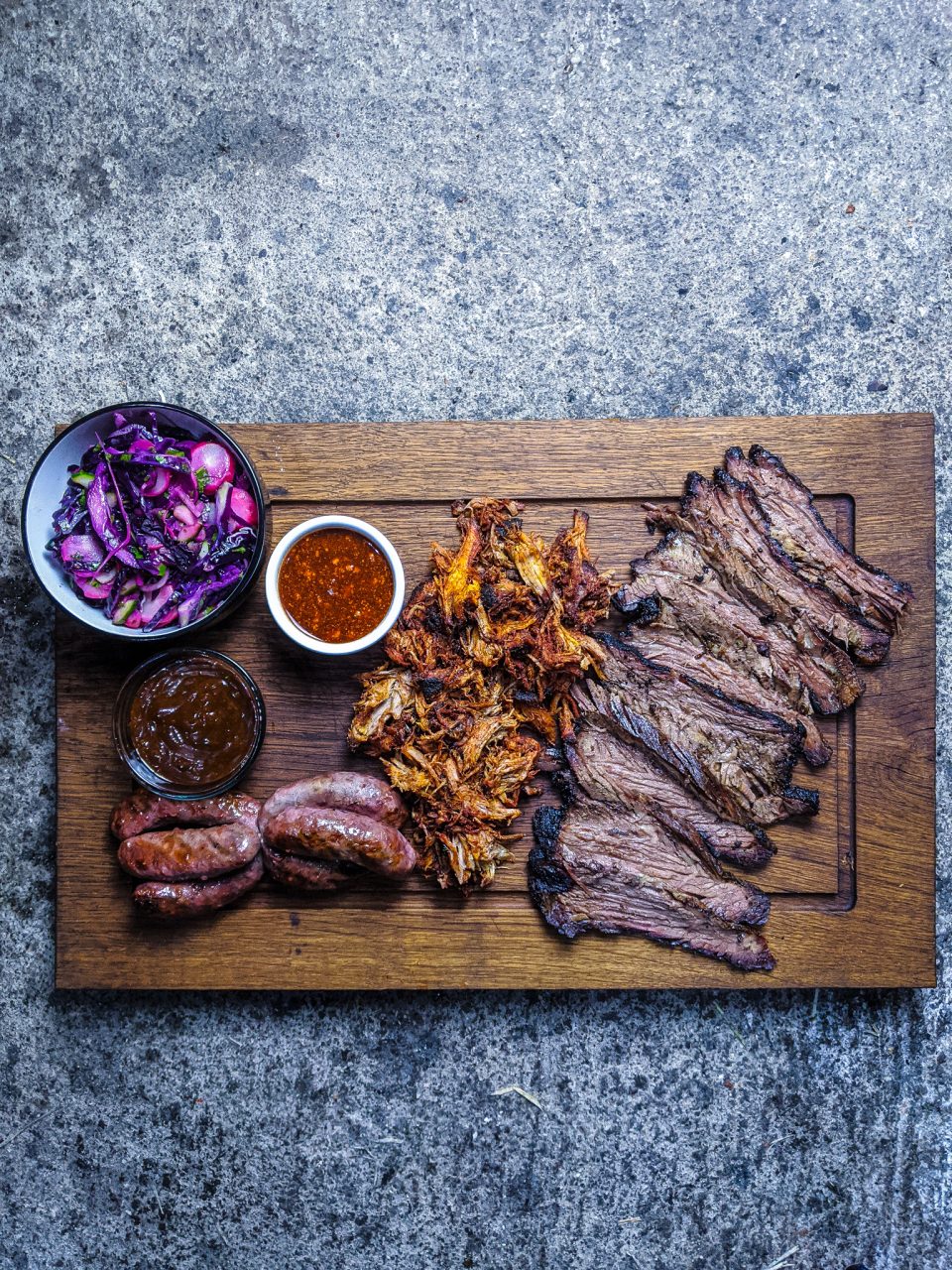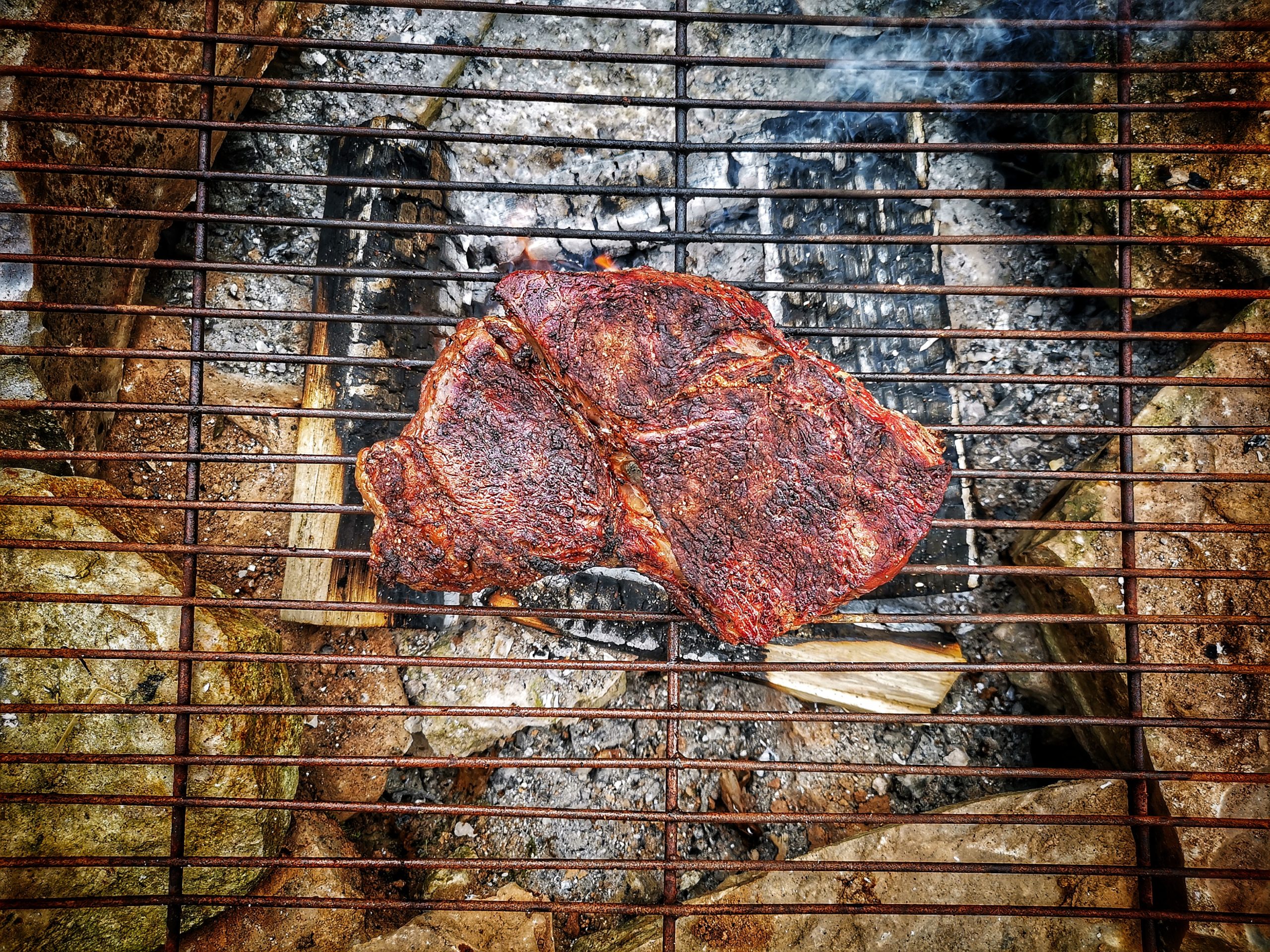
Good steaks need very little accompaniment. A fatty rump steak can coat the mouth, which a vinegary béarnaise sauce cuts through. Sweet honeyed carrots and parsnips, with charred asparagus turn a barbecued steak into a special meal.
Béarnaise sauce can be a little daunting, and there are plenty of shortcut recipes that get close to the real deal. I prefer the traditional method, with its multiple pans and slight complication.
The Recipe
This recipe will take about 45 minutes to make. The béarnaise sauce is the most complicated element, but only takes about 20 minutes if you’re careful.

Bearnaise Sauce
This sauce is a great accompaniment to fatty beef, especially rump steak or ribeyes. The red wine vinegar cuts through the fat well and cleanses the palate.
It is a complicated sauce to make, and I recommend giving it care and attention. If you want a quicker and easy shortcut instead I recommend these recipes by SeriousEats, The Spruce Eats and Francois de Melogue.
Ingredients
-
Red Wine Vinegar – 100ml
-
Shallots – 2 average sized, chopped finely
-
Cracked Black Pepper – 1/2 tsp
-
Unsalted Butter – 100g
-
Egg Yolks – 2 from medium eggs
-
Maldon Sea Salt
-
Tarragon – 1 tbsp dried or a small bunch if fresh
The sauce is always best with fresh tarragon but dried works equally well. Use slightly more fresh tarragon as dried has a stronger flavour, as with most dried herbs.
Some of these steps take place simultaneously, so read the directions and be prepared before you start. You’re going to need three saucepans, including one larger pan that a smaller saucepan can fit within. You’ll also need a slotted spoon and a fine sieve. There’s more information in the tools section below.
Directions
- Heat the red wine vinegar in a saucepan and add the finely chopped shallots and black pepper.
- Reduce the mixture until there is almost no liquid left.
- In a separate saucepan melt the unsalted butter it begins to foam.
- Skim the impurities and whey that rises to the surface of the butter using a slotted spoon and discard.
- Fill the larger saucepan with boiled water and place on a low heat to use as a bain-marie.
- Place the saucepan containing the shallot and red wine vinegar into the larger saucepan.
- Add the egg yolks into the pan and whisk together. The mixture should be light and foamy, ensure that the heat stays low so that the eggs don’t cook and scramble.
- Remove the small saucepan from the heat and slowly add the melted butter, whisking gently to combine.
- Place the sauce into a fine mesh sieve and strain into a clean saucepan. You will need to push the sauce against the sieve using the back of a spoon.
- Add the tarragon to the sauce and season with the sea salt to taste.
The sauce can used immediately or can be stored in the fridge until needed. Give it a stir as it will set slightly and bring to room temperature.
Honeyed Carrots and Parsnips
This side dish is a sweet accompaniment to steaks or other beef dishes. The honey burns slightly creating a caramelisation that provides texture as well as taste. These can be made on the barbecue or in the oven and go well with roast potatoes.
Directions
- Peel and chop the carrots and parsnips. The carrots should be in even sized batons. The parsnips should have shorted but thicker tops and longer but thinner bottoms. This means they will be roughly the same size overall as the carrots.
- Par-boil the carrots in salted water for 5 minutes.
- Add the parsnips and par-boil for a further 2 minutes.
- Drain the carrots and parsnips and let them dry in their own steam.
- Melt the butter in a large roasting dish.
- Add the honey and heat up so the two combine.
- Add the carrots and parsnips along with the salt and pepper.
- Stir the carrots and parsnips ensuring that they are coated with the glaze.
- Cook at 200C for 30 minutes until the edges of the carrots and parsnips are blackened.
Charred Asparagus
Asparagus seems to be the enemy of good cooking. It’s often limp and watery, overcooked or sometimes rock hard.
I cook the asparagus before the steaks go on for two minutes in just boiling water. Small, thinner asparagus need only a minute and thicker ones when in full season, three minutes. I then plunge the asparagus into ice cold water and sit them in the fridge until the steaks are done. This is optional and you can cook them and head straight to the grill.
Directions
- Add ice to a bowl of cold water. This can be chilled in the fridge until needed.
- Bend each asparagus stalk near the bottom until it breaks. This removes the woody bottom easily.
- Boil a saucepan of water and add salt and the asparagus.
- Gently boil the asparagus for one minute if small, and two minutes if larger. The asparagus should resist a fork but be a little softer.
- Place the asparagus straight into the ice water using a slotted spoon. This can be put back in the the fridge until ready to char.
- Remove the asparagus from the water and pat dry. Place the asparagus on the hot grill and char each side.
The Cook
This is a very simple cook on the barbecue. Set up the grill for direct cooking, using two zones. You’ll need a half chimney starter of charcoal for a small number of steaks.
Pat the steaks dry and add them to the grill. Once the steak releases from the grill without resistance turn the steaks over to cook the other side. Sprinkle the top side with a pinch of sea salt.
Turn the steaks over once more for each side. This ensures that the steak is cooked evenly. Use a thermometer to check for how well done the steak is.
| Doneness | Temperature |
| Rare | 52C |
| Medium Rare | 57C |
| Medium | 63C |
| Medium Well | 66C |
| Well Done | 71C |
Once the steaks are done they should be wrapped in heavy duty foil and rested for a minimum of ten to fifteen minutes.
The Tools
As far as tools go this is a pretty standard cook. I used a pigtail flipper from Prosmoke that I have recently reviewed.
* Disclaimer: I may get commissions for purchases made through links on this page. I always try to be clear where I use a specific item, and don’t recommend anything I don’t use myself.






